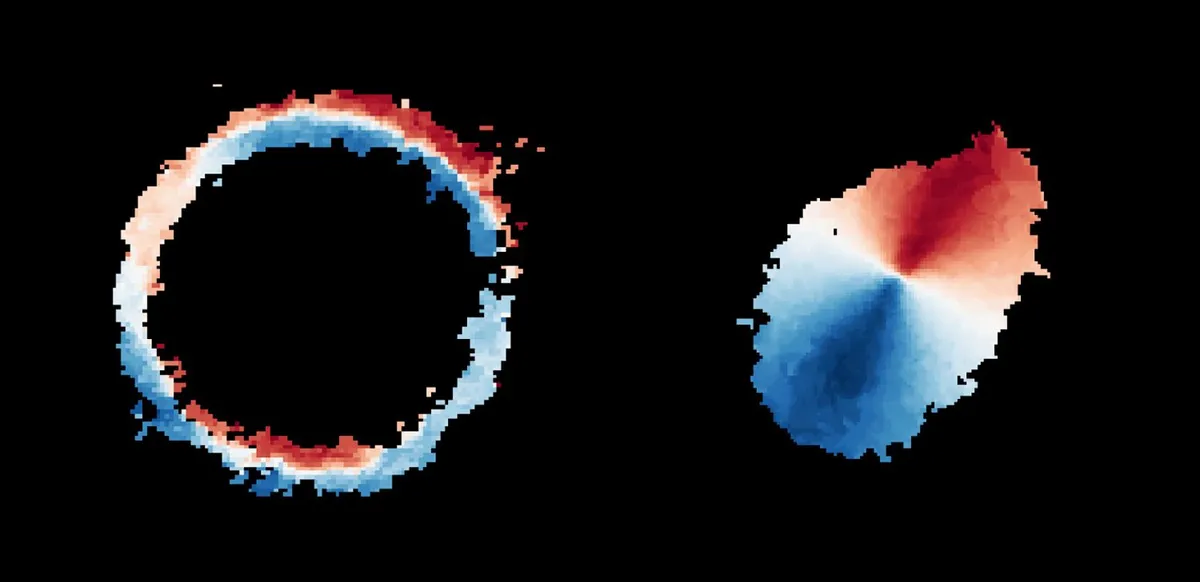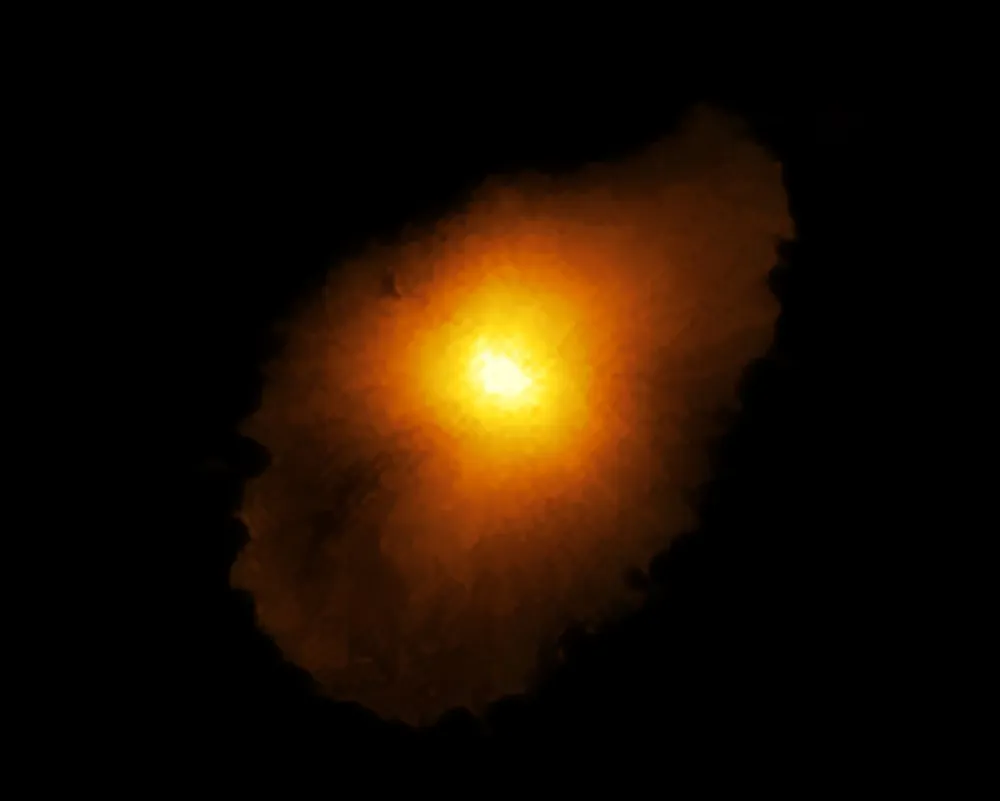Astronomers have spotted the most distant galaxy that's similar to our own ever observed. The galaxy is so far away that it appears to us as it did when the Universe was just 1.4 billion years old.
The galaxy, named SPT0418-47, is about 12 billion lightyears away and is also surprisingly unchaotic, say astronomers, which challenges current theories that all early galaxies were unstable.
The galaxy doesn't seem to have spiral arms, but has a rotating disc and a bulge, much like our own Milky Way galaxy.
The discovery, made using the Atacama Large Millimeter/submillimeter Array (ALMA) in Chile, marks the first time a bulge in a galaxy has been seen so early on in the Universe, making it the most distant Milky Way lookalike ever observed.
If only the astronomers behind the Great Debate of 1920 could have seen these images...

Because the galaxy is so far away, even the most powerful telescopes can't get a good look at it.
Astronomers had to use gravitational lensing, a technique first predicted by Einstein in his theory of general relativity, to view the galaxy.
The technique works on the basis that mass bends space-time, so light from the galaxy could be magnified by the mass of a closer galaxy, like a cosmic magnifying glass.
This is why light from the galaxy appears as a ring of light around the closer galaxy in the images.
The astronomers who detected SPT0418-47 were then able to reconstruct the true shape of the galaxy and the motion of its gas by using computer software.

One of the key benefits of the discovery of such an early galaxy is that it helps astronomers construct a picture of what the early Universe was like.
“This result represents a breakthrough in the field of galaxy formation, showing that the structures that we observe in nearby spiral galaxies and in our Milky Way were already in place 12 billion years ago,” says Francesca Rizzo, PhD student from the Max Planck Institute for Astrophysics, who led the research.
“What we found was quite puzzling; despite forming stars at a high rate, and therefore being the site of highly energetic processes, SPT0418-47 is the most well-ordered galaxy disc ever observed in the early Universe,” says co-author Simona Vegetti, also from the Max Planck Institute for Astrophysics.
“This result is quite unexpected and has important implications for how we think galaxies evolve."
Read more about the study via the ESO website.
Iain Todd is BBC Sky at Night Magazine's Staff Writer.
